Steps to help you understand SEO and its importance
SEO (Search Engine Optimization), or search engine optimization, is the process of improving and promoting a website in accordance with the requirements of search engines.
Why is SEO important for online stores, corporate portals, and landing pages?
1. Growth of search traffic: advantages and importance for websites
Despite the widespread popularity of social networks and messengers, "Yandex" and Google continue to remain the leading search engines in the Russian segment of the Internet.
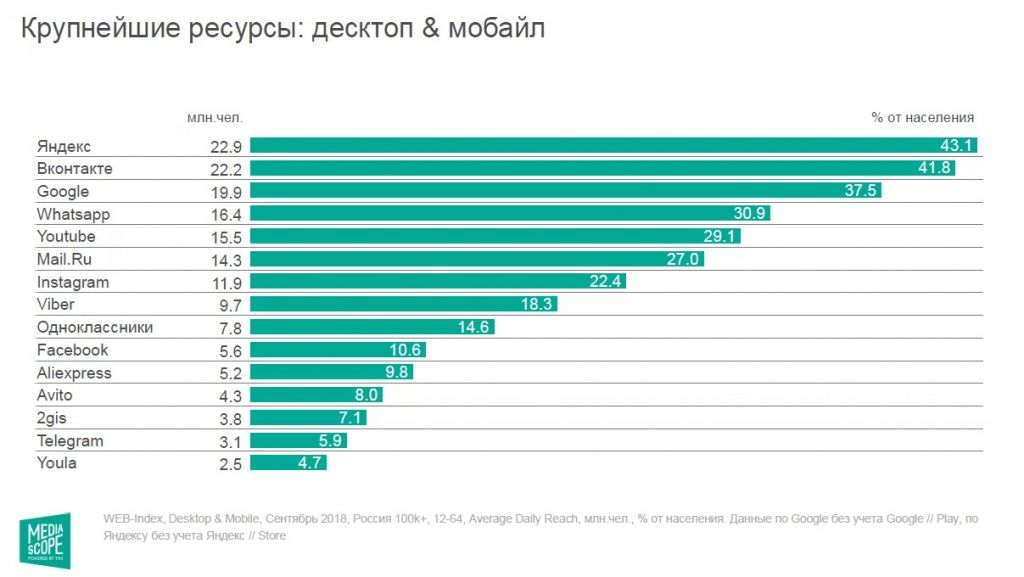
Analysis of the largest resources in Russia according to Mediascope data (September 2018)
Thus, search engines remain the main sources of traffic for websites. According to Data Insight data, approximately one-third of visitors to online stores come from search engines.
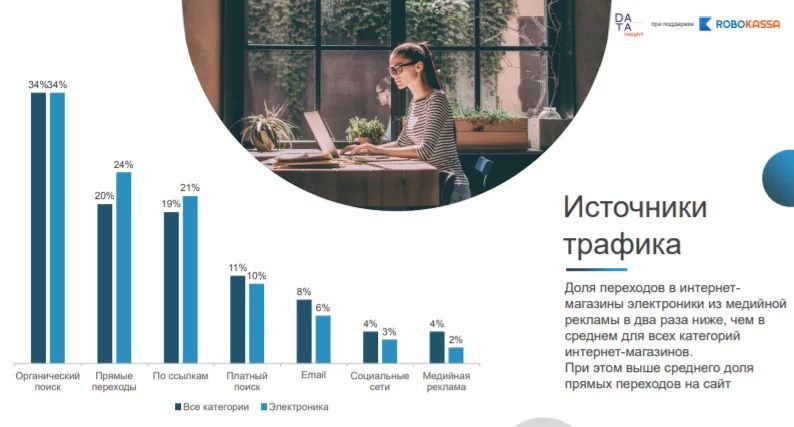
Shares of traffic sources for online stores according to Data Insight
For content projects such as corporate blogs, media, and informational websites, the share of search traffic is usually even higher. This can be confirmed using Similarweb.
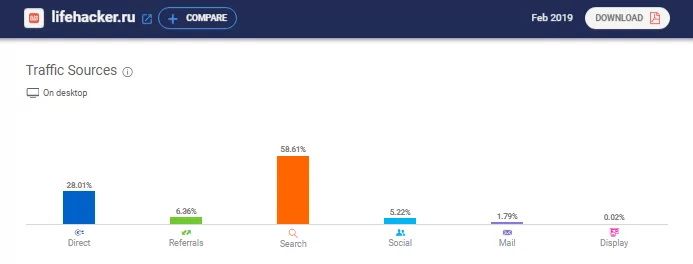
Traffic sources for lifehacker.ru according to Similarweb
Media, brands, and agencies are interested in search traffic not only because of its potential volume. One important advantage over other channels is that there is no need to pay for each click and website visit, as in contextual and targeted advertising.
However, it is worth noting that search traffic cannot be considered completely free. Especially in the initial stage, significant resources need to be invested in content, technical optimization, and other aspects. However, investments in SEO bring results and pay off in the long term, usually within 4-12 months.
2. Improving user experience: the key role of SEO
The main goal of search engines is to provide quality answers to user queries. This means selecting the most relevant, user-friendly, informative, and authoritative websites. When ranking, search engines take into account the following factors:
- Page loading speed: the faster the loading, the better the positions in search results (all other conditions being equal).
- Adaptability: the convenience of displaying the website on different devices, browsers, and operating systems.
- Website security: the presence of an enabled HTTPS protocol and absence of viruses.
- Matching keywords from the query with meta tags (page title and description), as these metadata provide additional information for search engines.
- Availability of reviews and information about payments, delivery, and guarantees.
Thus, effective SEO optimization not only increases website traffic but also enhances user experience. The convenience and informativeness of the website encourage visitors to spend more time on the site, return repeatedly, make purchases, and submit inquiries.
However, it is worth noting that the increase in traffic and leads, as well as the improvement in user behavior on the site, can only be achieved by using honest and legitimate search engine optimization methods (white hat SEO). The use of gray or black hat methods can lead to negative consequences and sanctions.
SEO Components for Any Website
Search Engine Optimization (SEO) includes the following stages of work:
1. Preparation and Planning
Before starting SEO, it is necessary to define goals, strategies, and promotion tools. This stage involves the following actions:
Audit of the existing website. The website is evaluated in terms of its compliance with search engine requirements. During the audit, errors such as:
- Broken links leading to non-existent pages, which deteriorate the user experience;
- Page duplication, which hinders promotion and reduces ranking in search results;
- Slow website loading, which may lead to user loss;
- Incorrect display on mobile devices, negatively affecting the mobile audience and site ranking.

Mobile optimization of the website can be evaluated using Google's test
Analysis of competitor websites. Data on website traffic, traffic sources, number of pages, search queries, search engine visibility, etc., are collected and compared.
Collection and clustering of the semantic core. Selection and grouping of user search queries, based on which the website will be promoted. Based on the collected keywords and phrases, the following is determined:
- Website structure (e.g., deciding on the creation of additional pages or modifying the existing hierarchy);
- Optimization of meta tags, headings, text, image descriptions, and other elements on the website;
- Selection of target pages for contextual advertising and configuration of ad displays.
Let's provide an example of a semantic core in the medical field.
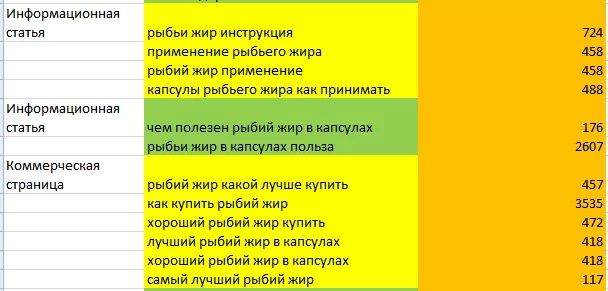
Example of a semantic core in the medical field
2. Internal website optimization
Within the framework of internal website optimization, the following tasks are performed:
-
Content filling:
- Creating articles in the blog, filling product cards in the online store, uploading videos and other content.
-
Setting unique meta tags (title, description) for each page and optimizing text according to the collected semantic core.
-
Interlinking:
- Linking website pages with each other, for example, in the article "How to use a product," it is reasonable to place a link to the product card and vice versa.
Internal optimization also includes technical tasks:
-
Setting up robots.txt and sitemap.xml files:
- These files contain instructions for search engine robots, which can be used, for example, to disallow indexing of certain pages and accelerate the indexing of others.
-
Setting up redirects:
- This is important, for example, when moving a website from one domain to another (e.g., site.ru → site.com) or changing the address of a page (site.ru/trendy2018 → site.ru/trendy2019).
-
Eliminating page duplication and broken links, resolving issues with responsiveness and loading speed, and other technical tasks.
Thus, internal optimization plays an important role in improving the website's positions in search engines and enhancing user experience.

Finding broken links using Xenu: a free desktop application
3. External website optimization
After successful internal optimization and completion of all technical tasks, it is time to focus on external factors.
External SEO optimization involves analyzing and acquiring backlinks to the website. Backlinks can be obtained using the following methods:
-
Mentions in the media:
- The company writes articles for industry resources, provides interviews and expert opinions related to its field of activity. Mentions can also occur in connection with various events, scandals, or buzz related to the company.
-
Guest publications:
-
Mentions in the media:
- The company places articles on thematic websites or in the blogs of other authors, containing links to their own website. This can be done through free collaboration or service exchange (barter).
External optimization is an important component of SEO and contributes to increasing the authority and visibility of the website in search engines. It helps attract more targeted audience and improve search engine rankings.

Check the reliability of the platform using the CheckTrust service (free - 500 checks)
4. Behavioral factors and their impact on the website
During the development and testing of a website, it is impossible to anticipate all the nuances of user interaction with the resource. What may seem reasonable to the developer and client may be inconvenient or unclear to most visitors. That is why it is important to consider behavioral factors and user experience when working on a website.
Web analytics systems allow obtaining information about how users behave on the website and analyzing this information to identify hypotheses and improve the resource. Some of the behavioral factors that search engines consider when ranking websites include:
-
Page depth: This metric reflects the number of pages a visitor has viewed on the website. The more pages viewed, the more interesting the website is considered to be for the user (except for landing pages, where this may not be relevant).
-
Time on site: This factor reflects how much time a user spent on the website. Prolonged time on site can indicate user interest in the presented content, products, or services.
-
Bounce rate: This metric reflects the percentage of users who leave the website immediately after visiting a single page. The higher the bounce rate, the worse it affects the website's ranking.
-
Repeat visits and direct traffic: These metrics indicate that users are familiar with the website and return to it or directly visit the website. This indicates trust and recognition of the website among users.
Behavioral factors play an important role in website optimization and its ranking in search engines. By considering these factors and working on improving user experience, you can increase the effectiveness of your website and attract more targeted audience.
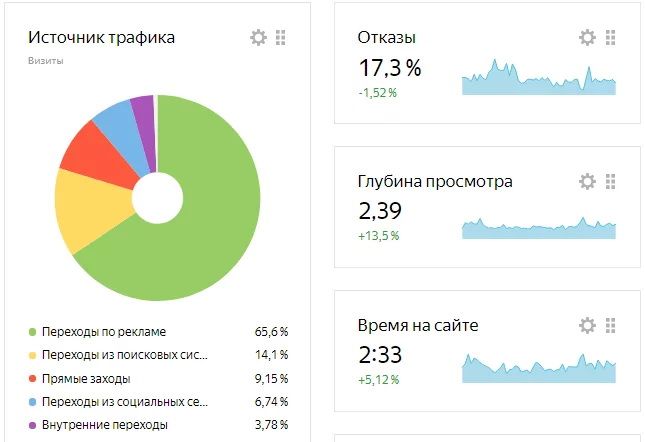
Key metrics can be assessed in the Yandex.Metrica summary
What is no longer relevant in SEO
Modern website promotion requires up-to-date and effective methods. The following approaches are no longer considered normal SEO practices and may be undesirable or even harmful to your website's ranking:
-
Link buying on exchanges: This method involves purchasing external links for the website, often using automation. However, this approach is susceptible to search engine filters such as "Minusinsk" by Yandex and "Penguin" by Google.
-
Submission to directories, classified ad websites, and forums: Another outdated method of artificially creating external links to the website involves mass submission to directories, classified ad websites, and forums. However, this is ineffective and may be perceived by search engines as undesirable practice.
-
Manipulation of behavioral factors: Simulating activity of real users, such as artificially increasing page depth and time spent on the website, is no longer an effective method. Search engines can detect such artificial manipulations and may react negatively to them.
-
Keyword stuffing: This method involves the excessive use of keywords in an unnatural form, created solely for search engine robots and not for users. Yandex fights against this practice with the "Baden-Baden" filter.
-
Ranking and keyword-focused promotion: Currently, promoting a website solely based on its positions for specific keywords has become less effective. Search engines such as Yandex and Google form search results considering multiple factors, including the user's location, search history, and the device used. Thus, being on top for specific queries does not guarantee success, as each user has their own individual search results. Therefore, creating high-quality content that is useful and interesting for users becomes more important. Focus on providing valuable information, solving problems, and meeting the needs of your target audience. This approach will help attract organic traffic and earn natural backlinks, ultimately improving your website's ranking and visibility in search engines.
TIP: If you are offered such services, it is better to decline them, even if they are offered for free. Instead, focus on quality content, user experience, and building organic and natural links to your website. Following these principles will help you achieve long-term results in search engine optimization and maintain a good reputation for your website in the eyes of search engines.
Conclusion
Now that you have an understanding of the importance of SEO and the components of website optimization, you can move forward. Trying to learn internet marketing on your own by reading articles, watching videos, and studying books can be a long and labor-intensive process that may not be very effective. Instead, it is recommended to turn to online courses with experienced practitioners as instructors, with homework assignments, analysis of real projects, and opportunities for internships and job placements. It is especially valuable if such courses cover not only SEO but also other areas of internet marketing, such as SMM, email marketing, and PPC advertising. Such a comprehensive approach will help you gain deep knowledge and skills that can be applied in practice to achieve success in the field of internet marketing.